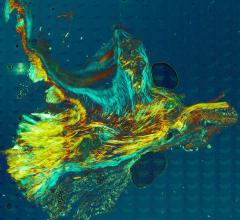
August 4, 2015 — Over the past several years, advanced heart failure patients who have not responded to medical therapy have been given new hope, and are surviving longer with implanted left ventricular assist devices (LVADs). Although echocardiography is recommended for each phase of care for patients with LVADs, there has been limited published data and no formal guidance for the use of echocardiography in this growing patient population. In an effort to fill this gap, a new document, Echocardiography in the Management of Patients with Left Ventricular Assist Devices: Recommendations from the American Society of Echocardiography, will appear in the August 2015 issue of the Journal of the American Society of Echocardiography (JASE).
Usage of this emerging technology has increased exponentially since the U.S. Food and Drug Administration (FDA) approved a newer generation of LVADs in 2008 for patients unable to undergo heart transplantation, with more than 30,000 patients having now received long duration LVADs worldwide.
The writing group for this guideline was chaired by Raymond F. Stainback, M.D., FASE, medical director of noninvasive cardiac imaging at Texas Heart Institute, in Houston. Stainback noted, “The recent growth of hospital and ambulatory LVAD patients and a lack of consensus on the performance of LVAD echoes has placed a strain on patient care facilities. Our goal with this guideline is to alleviate this situation by providing a convenient reference for the entire mechanical circulatory support team, including practical LVAD echo exam protocols and checklists for timing and performance of echo exams.”
The new guideline document covers the role of echocardiography throughout the five distinct phases of patient care related to LVADs – preoperative patient assessment, perioperative imaging, postoperative surveillance, postoperative problem-focused echocardiography, and recovery protocols. Stainback also commented that “because this is an emerging area, the writing group spent a lot of time and effort to come to consensus, and many of our recommendations are based on expert opinions from high-volume LVAD implant centers. LVAD echo exams can be rather straightforward or uniquely time-consuming and complex, depending upon the situation. However, obtaining the correct information expediently, without disrupting normal echo lab operations, has the potential for improving heart failure care and reducing hospital readmissions.”
In conjunction with the publication of the guideline document, Stainback will conduct a live webinar, including a question and answer section, on Aug. 19, 2015 at 1:00 pm ET.
For more information: www.asecho.org


 April 01, 2025
April 01, 2025 








